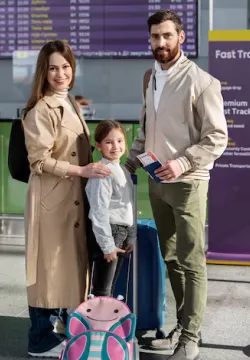Employment Immigration Visas: Guide to Working in the United States
The United States has long been a beacon for individuals seeking new opportunities and career advancement. If you dream of working in the U.S., you must obtain an employment immigration visa. This process can seem complex, but it can be successful with the correct information and guidance. This guide provides a comprehensive overview of common employment-based visas, eligibility requirements, and the application process.

Types of Employment Immigration Visas
Several visa categories are created for foreign nationals seeking employment in the United States. Each category has specific requirements for different types of work and worker qualifications. Here are some of the most common employment immigration visas:
1. L-1 Visas: For Intracompany Transfers
L-1 visas are required for multinational companies that need to transfer employees from a foreign office to a U.S. office. This visa category have two types:
- L-1A Visa: For executives or managers.
- L-1B Visa: For employees with specialized knowledge.
Eligibility Requirements for L-1 Visas
- Qualifying Relationship: A qualifying relationship must exist between the U.S. company and the foreign company (parent company, subsidiary, branch, affiliate).
- Employment Abroad: The employee must have worked for the foreign company for at least one continuous year within the three years preceding their application.
- Executive/Managerial Capacity (L-1A) or Specialized Knowledge (L-1B): The employee must come to the U.S. to fill a qualifying role.
- Intent to Depart: The employee must demonstrate an intent to depart the U.S. when their visa status expires.
Application Process for L-1 Visas
- Employer Files Petition: The U.S. employer files Form I-129, Petition for a Nonimmigrant Worker, with U.S. Citizenship and Immigration Services (USCIS).
- Gather Supporting Documents: The employer must provide evidence of the qualifying relationship between the companies, the employee's qualifications, and the nature of the position in the U.S.
- Consular Processing: Once the petition is approved, the employee applies for the visa at a U.S. embassy or consulate in their home country.
2. H-1B Visas: For Professionals in Specialty Occupations
H-1B visas are for individuals coming to the U.S. to work in a specialty occupation. H-1B generally requires a bachelor's degree or higher in a specific field related to the job.
Eligibility Requirements for H-1B Visas
- Specialty Occupation: The position must require highly specialized knowledge of theoretical and practical application.
- Bachelor's Degree or Equivalent: The employee must possess at least a bachelor's degree or equivalent in a field related to the specialty occupation.
- Employer Sponsorship: A U.S. employer must sponsor the H-1B visa applicant.
- Labor Condition Application (LCA): The employer must obtain an LCA from the Department of Labor, certifying that the foreign worker will be paid the prevailing wage for the occupation and that working conditions will not adversely affect U.S. workers.
Application Process for H-1B Visas
- LCA Filing: The employer files an LCA with the Department of Labor.
- Employer Files Petition: The employer files Form I-129, Petition for a Nonimmigrant Worker, with USCIS.
- Gather Supporting Documents: The employer must provide evidence of the specialty occupation, the employee's qualifications, and the LCA.
- H-1B Cap and Lottery: Due to the high demand for H-1B visas, there is an annual cap on the number of new visas issued. If the number of applications exceeds the cap, a lottery system is used to select petitions for processing.
- Consular Processing: If the petition is selected in the lottery and approved, the employee applies for the visa at a U.S. embassy or consulate.
3. H-2B Visas: For Temporary Non-Agricultural Workers
H-2B visas allow U.S. employers to hire foreign workers for temporary non-agricultural jobs when there is a shortage of qualified U.S. workers.
Eligibility Requirements for H-2B Visas
- Temporary Need: The employer must demonstrate a temporary need for the worker's services. This can include seasonal work, peak-load needs, one-time occurrences, or intermittent needs.
- U.S. Worker Shortage: The employer must show that there are not enough U.S. workers who are able, willing, qualified, and available to do the temporary work.
- No Adverse Effect on U.S. Workers: The employer must demonstrate that employing H-2B workers will not adversely affect the wages and working conditions of similarly employed U.S. workers.
- Full-Time Employment: The job must be full-time.
Application Process for H-2B Visas
- Temporary Labor Certification: The employer must obtain a temporary labor certification from the Department of Labor. This certification confirms that there are not enough U.S. workers available for the job and that hiring foreign workers will not harm U.S. workers.
- Employer Files Petition: The employer files Form I-129, Petition for a Nonimmigrant Worker, with USCIS.
- Gather Supporting Documents: The employer must provide evidence of the temporary need for the worker, the labor certification, and other supporting documentation.
- Consular Processing: Once the petition is approved, the employee applies for the visa at a U.S. embassy or consulate.
4. P-1 Visas: For Internationally Recognized Athletes and Entertainers
P-1 visas are for individuals coming to the U.S. to perform in a specific athletic competition or entertainment event.
Eligibility Requirements for P-1 Visas
- International Recognition: The individual or group must have achieved international recognition in their field.
- Specific Event or Competition: The individual or group must be coming to the U.S. to participate in a specific event or competition.
- Employer or Sponsor: The individual or group must be sponsored by a U.S. employer or sponsoring organization.
Application Process for P-1 Visas
- Employer or Sponsor Files Petition: The U.S. employer or sponsoring organization files Form I-129, Petition for a Nonimmigrant Worker, with USCIS.
- Gather Supporting Documents: The employer or sponsor must provide evidence of the individual's or group's international recognition, the specific event or competition, and other supporting documentation.
- Consultation with Labor Organization: In some cases, the employer or sponsor may need to consult with a labor organization regarding the employment of the P-1 visa applicant.
- Consular Processing: Once the petition is approved, the individual or group applies for the visa at a U.S. embassy or consulate.
Key Considerations for All Employment Visas
- Employment Offer: In most cases, you will need a formal job offer from a U.S. employer to be eligible for an employment visa.
- Special Occupation (H-1B): For H-1B visas, the job must qualify as a specialty occupation requiring specialized knowledge and a bachelor's degree or higher.
- Temporary Labor Certification (H-2B): For H-2B visas, the employer must obtain a temporary labor certification from the Department of Labor.
- Maintaining Visa Status: It is crucial to maintain your visa status while in the United States. This includes complying with the terms and conditions of your visa and not engaging in unauthorized employment.
- Change of Employer: If you change employers while on an employment visa, your new employer will typically need to file a new petition with USCIS.
- Path to Permanent Residency: Some employment visas may provide a path to permanent residency (a Green Card) in the future.
Find Professional Guidance
Navigating the employment visa process can be challenging. It is highly recommended to consult with an experienced immigration attorney who can provide guidance specific to your situation, help you gather the necessary documentation, and represent you throughout the process.
Disclaimer: This information is intended for general informational purposes only and does not constitute legal advice. It is essential to consult with an immigration attorney for advice regarding your specific circumstances.



